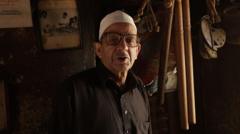In the narrow alleys of Srinagar, a unique struggle for cultural preservation unfolds in Ghulam Mohammed Zaz's workshop. Renowned as the last traditional santoor maker in Kashmir, Zaz represents a lineage of craftsmen with over seven generations dedicated to the art of handcrafted string instruments. The santoor, a trapezoidal instrument known for its enchanting tones, has historically been linked to the rich musical culture of Kashmir.
Once highly valued by renowned Sufi and folk musicians, the demand for Zaz's handmade instruments has plummeted due to the rise of cheaper, machine-made alternatives. Additionally, changing musical preferences, particularly the rise of hip hop and electronic genres, have left traditional arts struggling for relevance. Music teacher Shabir Ahmad Mir highlights how the younger generation is losing touch with the discipline of classical music, exacerbating the situation for artisans like Zaz.
Despite the challenges, Ghulam Mohammed holds onto hope. He reflects on his family's illustrious background, where he learned the intricacies of making a santoor from his father and grandfather. Using only manual tools, he emphasizes that the craftsmanship is more than a trade—it's a deep understanding of the materials and sounds involved.
His dedication was recognized in 2022 when he received the Padma Shri, India's fourth highest civilian award, but the accolades bring mixed emotions. Zaz laments that there are no apprentices in the family to carry on this delicate art form. He has fielded offers for government aid and potential apprentices but remains disillusioned.
“In my shop, I don’t just create instruments; I create poetry and emotion,” says Zaz. He suggests that true artistry can only emerge from patience and attention to detail, as each handcrafted santoor can take months to complete, resonating with a warmth missing in machine-made counterparts.
Zaz struggles to find a successor who is not merely after profit but possesses a genuine love for the craft. As he nears his eighties, the urgency to pass on this musical legacy intensifies. His hope echoes in the silence of his shop, which he hopes will inspire someone to honor and maintain the cultural significance of the santoor long after he is gone.























